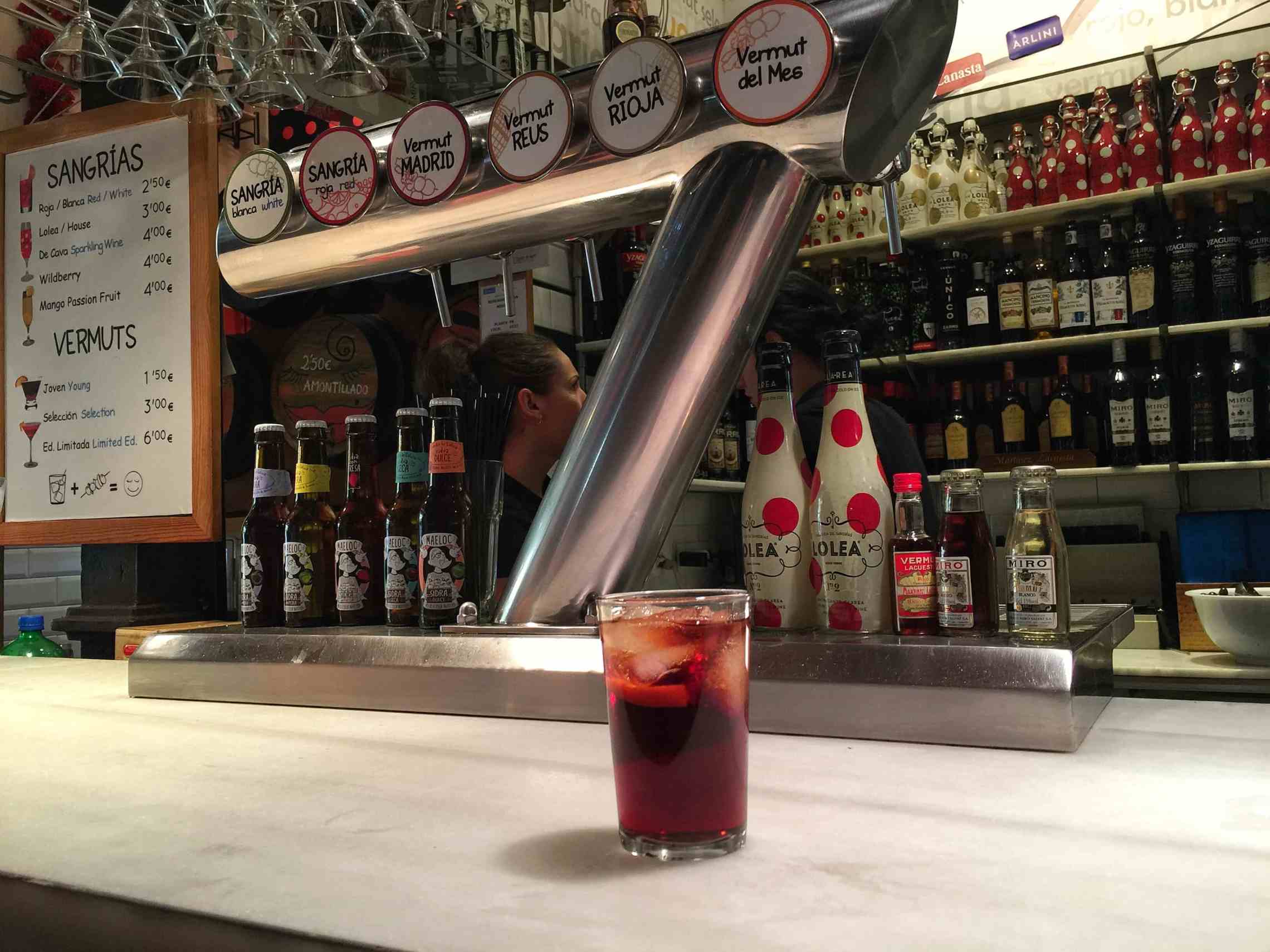
Plus, The Best of Spain’s Drinking Culture.
Vermouth is often associated with cocktails, notably Martinis and Manhattans. It’s also the star of Spain’s drinking culture – yes, as loved by locals as beer, wine, and gin and tonic. Learn the differences between vermouths like Spanish vermut versus Italian vermouth versus French vermouth, plus its popularity in Spain.
About Vermouth: What is it and a Brief History
Vermouth is a fortified wine that starts out as white wine. The name comes from the German word “wermut” meaning wormwood which is one of the bitters used to make vermouth.
There are different kinds of vermouth like the dry white vermouth and the sweet, red vermouths. The latter gets its color from a process of mixing alcohol like brandy, sherry, or port with caramelized sugar, bitters like licorice root or wormwood, and infused spices like cloves, cardamom, and cinnamon.
Vermouth was first created in Turin, Italy in the 18th century as a medicinal treatment for stomach problems and to aid digestion. It soon popularized in Italy and Europe as an aperitif.
Spanish Vermut versus Italian Vermouth versus French Vermouth
In France, the local Dubonnet has been enjoyed for centuries including its white vermouth and its red vermouth with its distinct botanicals and touch of oak from the aging barrels. In Italy, the red vermouth is has a thicker mouthfeel, it’s spicier and more bitter on the palate. In Spain, it’s leaner and sweeter with more pronounced fruit flavors.
Aside from French Dubonnet, other popular brands include the Italian Cinzano, Martini & Rosso, Noilly Prat, Dolin, and the Spanish labels like Miro, Lustau, and Yzaguirre.
Spain’s Vermut Culture
Vermut in Spain was first made in Reus in the 19th century by Italians from Turin. Today, you can get delicious bottles from the Catalan region and the best vermut on tap in taverns in Madrid. There are even specialized bars for vermut called vermuterias which pair the drinks with snacks like chips, anchovies, and cheese as the salty bites balance the sweet drink.
While you can drink vermut at any time of the day and any day of the week, locals typically drink it before the big Sunday family lunch or in the afternoon before dinner.
In Spain, vermut is not just a mixer or drink, it is a way of life – “la hora del vermut” is an expression you’ll often see and hear when it comes to drinking Spanish vermouth. And as opposed to other cultures that blend vermouth with other spirits, Spanish vermut is best enjoyed as the star – just add ice and a slice of orange (and maybe an olive and a spritz of soda water).
Sign up for my newsletter on the sidebar for blog updates and my travel insider tips! And, check out my vlogs on YouTube!


